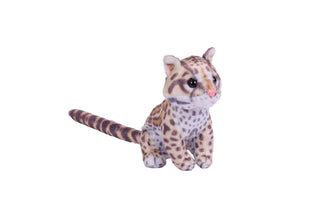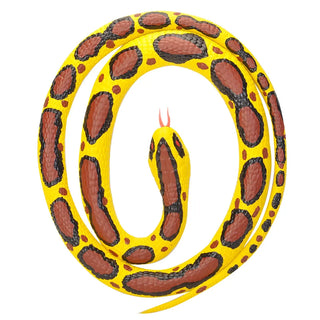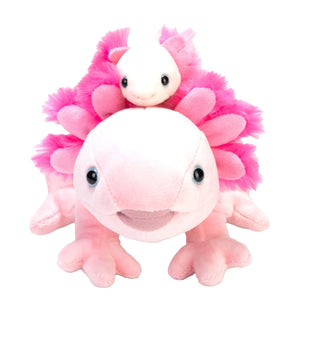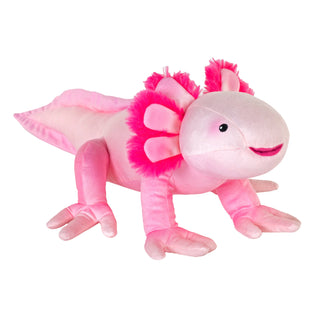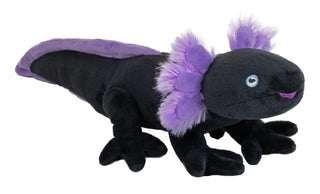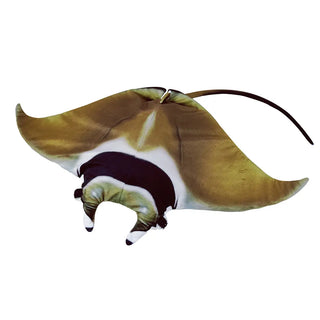Your Search For "ocelot" Revealed The Following:
Filter
Active Filters
Rainforest Splendors Ocelot Stuffed Animal - 6"
$14.99
- Unit price
- / per
INCLUDES:
- Age:0+
- Brand:Rainforest Splendors
- Gender:Boy
- Gender:Girl
- Size:6"
$14.99
- Unit price
- / per
Grey Wolf Pincher
$8.99
- Unit price
- / per
INCLUDES:
- Age:3+
- AnimalType:Wolf
- Brand:Pincher
- Gender:Boy
- Gender:Girl
- Size:18"
- Wolf
$8.99
- Unit price
- / per
Bermese Python Rubber Snake - 46"
$12.99
- Unit price
- / per
INCLUDES:
- Age:3+
- AnimalType:Python
- Brand:Wild Republic Rubber Snakes
- Gender:Boy
- Gender:Girl
- Python
- Size:46"
$12.99
- Unit price
- / per
Mom & Baby Axolotl Stuffed Animal - 9"
$22.99
- Unit price
- / per
INCLUDES:
- Age:0+
- Brand:Mom & Baby
- Gender:Boy
- Gender:Girl
- Size:9"
$22.99
- Unit price
- / per
Cuddlekins Eco Axolotl Stuffed Animal - 12"
$24.99
- Unit price
- / per
INCLUDES:
- Age:0+
- Brand:Cuddlekins Eco
- Gender:Boy
- Gender:Girl
- Size:12"
$24.99
- Unit price
- / per
Cuddlekins Eco Mini Black Axolotl Stuffed Animal - 8"
$14.99
- Unit price
- / per
INCLUDES:
- Age:0+
- Brand:Cuddlekins Eco Mini
- Gender:Boy
- Gender:Girl
- Size:8"
$14.99
- Unit price
- / per
Ocelot Stuffed Animal - 12"
$22.99
- Unit price
- / per
INCLUDES:
- Age:0+
- AnimalType:Ocelot
- Brand:Cuddlekins
- Gender:Boy
- Gender:Girl
- Ocelot
- Size:12"
$22.99
- Unit price
- / per
Pincher Purple T-Rex - 18"
$8.99
- Unit price
- / per
INCLUDES:
- Age:3+
- AnimalType:T-Rex
- Brand:Pincher
- Gender:Boy
- Gender:Girl
- Size:18"
- T-Rex
$8.99
- Unit price
- / per
Pincher Brown T-Rex - 18"
$8.99
- Unit price
- / per
INCLUDES:
- Age:3+
- AnimalType:T-Rex
- Brand:Pincher
- Gender:Boy
- Gender:Girl
- Size:18"
- T-Rex
$8.99
- Unit price
- / per
Devil Ray Stuffed Animal - 20"
$37.99
- Unit price
- / per
INCLUDES:
- Age:0+
- Brand:Living Ocean
- Gender:Boy
- Gender:Girl
- Size:20"
$37.99
- Unit price
- / per
Headband Axolotl - 10"
$8.99
- Unit price
- / per
INCLUDES:
- Age:10M+
- Brand:Headband
- Gender:Boy
- Gender:Girl
- Size:10"
$8.99
- Unit price
- / per
Cuddlekins Eco Mini Axolotl Stuffed Animal - 8"
$14.99
- Unit price
- / per
INCLUDES:
- Age:0+
- Brand:Cuddlekins Eco Mini
- Gender:Boy
- Gender:Girl
- Size:8"
$14.99
- Unit price
- / per
Pincher Axolotl - 18"
$8.99
- Unit price
- / per
INCLUDES:
- Age:3+
- Brand:Pincher
- Gender:Boy
- Gender:Girl
- Size:18"
$8.99
- Unit price
- / per
Axolotl Backpack - 14"
$26.99
- Unit price
- / per
INCLUDES:
- Age:4+
- Brand:Wild Republic Backpacks
- Gender:Boy
- Gender:Girl
- Size:14"
$26.99
- Unit price
- / per
You're viewing 1-14 of 14 results

